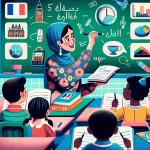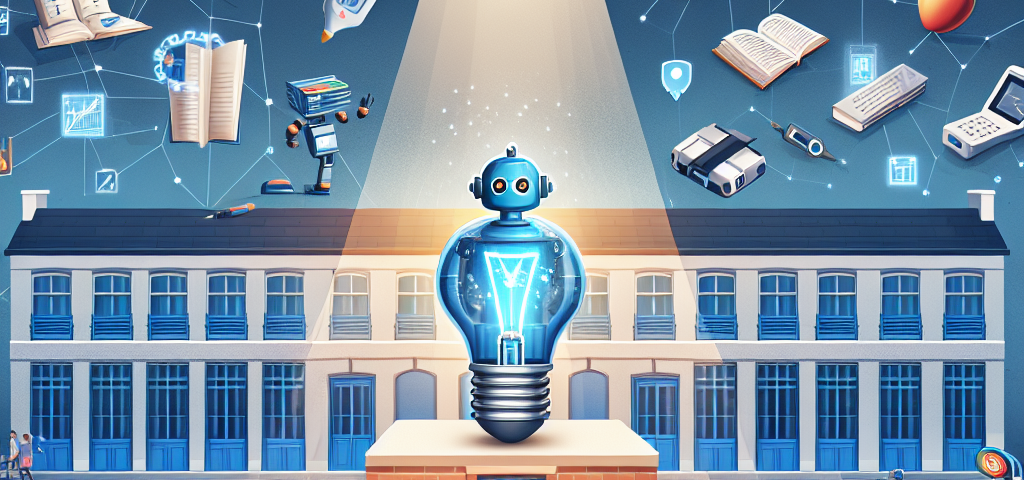
Five Must-Have Resources for Teaching French to Primary Students
May 31, 2025
Music, Art, and More: Integrating Creative Arts into French Lessons
May 31, 2025
In an ever-evolving educational landscape, French secondary schools are standing at the forefront of innovation. As the world grapples with rapid technological advancements, shifting societal needs, and diverse student populations, these institutions are dynamizing their approaches to learning, teaching, and community engagement. Here’s a closer look at how they’re adapting to change and fostering an environment that not only acknowledges but embraces innovation.
Embracing Technology in the Classroom
One of the most significant shifts in French secondary education has been the integration of technology into the curriculum. With the onset of the digital age, schools have begun to harness the potential of tools like interactive whiteboards, tablets, and online platforms. These technologies offer students new ways to engage with content, collaborate on projects, and enhance their learning experiences.
For instance, schools have adopted blended learning models, combining traditional classroom instruction with digital resources. This approach allows for personalized learning, where students can progress at their own pace and revisit materials as needed. Moreover, educational software and applications are being utilized to help students develop critical digital skills that are essential for future employment.
Reimagining the Curriculum
The traditional French educational model is undergoing a transformation as schools re-evaluate their curricula to align with contemporary needs. Emphasis is now placed on interdisciplinary learning, critical thinking, and problem-solving abilities. Subjects are being taught in a more integrated manner, allowing students to see the connections between different fields of study.
For example, the implementation of project-based learning has gained traction. Students collaborate on real-world projects that require them to apply knowledge from various disciplines, encouraging a more holistic understanding of the material. This approach not only enhances student engagement but also prepares them for the complexities of the modern workforce.
Fostering Inclusivity and Diversity
French secondary schools are increasingly prioritizing inclusivity and diversity in their educational practices. Recognizing the rich tapestry of cultures and backgrounds within their student populations, schools are striving to create environments where all students feel valued and supported.
Programs aimed at catering to diverse learning needs—such as specialized support for students with disabilities, language support for non-native speakers, and social-emotional learning initiatives—are being rolled out. Furthermore, schools are promoting cultural awareness and sensitivity through various extracurricular activities and partnerships with local communities, preparing students to thrive in a globalized society.
Professional Development for Educators
To successfully implement these innovative practices, French schools understand the paramount importance of investing in teacher training and professional development. Continuous learning opportunities for educators are being facilitated to equip them with the skills needed to adapt to new methodologies and technologies.
Workshops, seminars, and collaborative learning spaces encourage teachers to share best practices and learn from one another’s experiences. This culture of professional growth not only enhances educational standards but also boosts teacher morale, fostering a more motivated and engaged workforce.
Community and Parental Engagement
In the face of change, community and parental engagement have become crucial components in the innovation strategy of French secondary schools. Schools are increasingly recognizing the value of building strong partnerships with families and local organizations. Collaborative projects, parent-teacher associations, and community service initiatives help create a supportive educational ecosystem.
Many schools are now involving parents in decision-making processes and encouraging their participation in school activities, which fosters a sense of belonging and commitment to the school’s mission. This involvement is crucial in bridging the gap between home and school, ensuring that students receive the support they need from both fronts.
Conclusion
As French secondary schools navigate the complexities of modern education, their adaptive strategies highlight a commitment to innovation and progress. By embracing technology, reimagining curricula, fostering inclusivity, investing in educators, and engaging the community, these schools are not just adapting to change—they are leading the charge toward a brighter, more inclusive future for all students. Through these efforts, French educators are not only preparing their students for academic success but also equipping them with the skills and values necessary to thrive in a rapidly changing world.

